Why does the mobile app not work for my Fujitsu ASYG09KMCDN Air Conditioner?
- CCheryl ThompsonSep 9, 2025
If the mobile app for your Fujitsu Air Conditioner does not work, check that the version of the OS on your mobile device is supported.
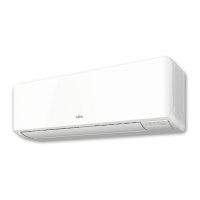
Why does the mobile app not work for my Fujitsu ASYG09KMCDN Air Conditioner?
If the mobile app for your Fujitsu Air Conditioner does not work, check that the version of the OS on your mobile device is supported.
Why is there a smell coming from my Fujitsu ASYG09KMCDN?
Your Fujitsu Air Conditioner may be emitting smells because it has absorbed odors from interior textiles, furniture, or cigarette smoke. These smells can be emitted during operation.
What to do if I have not received the e-mail when registering my Fujitsu ASYG09KMCDN account?
If you have not received the registration email for your Fujitsu Air Conditioner account, adjust your domain permissions to prevent it from being rejected as spam.
How to register additional air conditioners on my Fujitsu ASYG09KMCDN Air Conditioner?
To register additional Fujitsu Air Conditioners, repeat the setup of the chosen mode in “9.2. Setting to use wireless LAN control” for each air conditioner.
| Type | Split System |
|---|---|
| Mounting | Wall Mounted |
| Cooling Capacity | 2.5 kW |
| Heating Capacity | 3.2 kW |
| Energy Efficiency Class (Cooling) | A++ |
| Energy Efficiency Class (Heating) | A+ |
| Refrigerant | R32 |
| Dimensions (Indoor Unit) | 800 x 290 x 230 mm |
| Dimensions (Outdoor Unit) | 800 x 540 x 300 mm |
| Power Supply | 220-240 V, 50 Hz |
| Weight (Indoor Unit) | 8 kg |
| Indoor Unit Noise Level | 20-40 dB(A) |
| Coefficient of Performance (COP) | 4.00 |
| Noise Level (Indoor) | 20-40 dB(A) |
Important warnings regarding repairs, power supply, refrigerant, and user responsibilities.
Cautions on ventilation, operating conditions, placement, and handling of the unit and its parts.
Explains the meaning of warning and caution symbols used on the unit and in the manual.
Warnings and cautions related to battery handling, installation, and disposal.
Lists and shows the included accessories for the indoor unit.
Provides instructions on how to install the remote controller holder.
Identifies and illustrates the components of the indoor unit.
Describes the remote controller, its functions, and signal transmission.
Step-by-step guide to start the air conditioner, including mode and temperature selection.
Instructions on how to switch the temperature display between Celsius (°C) and Fahrenheit (°F).
How to adjust the fan speed for optimal air cleaning and comfort.
How to adjust the vertical and horizontal airflow direction for comfortable air distribution.
How to set a weekly schedule for automatic operation based on day and time.
How to set timers for turning the unit on/off or creating a programmed sequence.
How to set a timer that gradually adjusts temperature for comfortable sleep.
Activates modes like Economy operation to save electricity by adjusting temperature settings.
Activates maximum power and airflow for rapid cooling or heating.
Reduces noise from the outdoor unit by decreasing compressor speed.
Maintains room temperature at 10°C to prevent extreme drops during heating.
Important warnings and cautions for using wireless LAN control safely and effectively.
Precautions related to radio waves, security, and FCC/IC compliance for wireless operation.
Instructions for installing the mobile app and registering the unit.
Procedure to set the remote controller to a specific mode for WLAN setup.
Step-by-step instructions on how to safely remove the WLAN adapter from the unit.
How to reset or initialize the WLAN adapter, for example, when changing routers.
How to set a custom code for the remote controller to manage multiple units.
Instructions for cleaning the main body of the indoor unit.
Steps to remove, clean, and replace the air filters.
Instructions for cleaning deodorization filters and replacing Apple-catechin filters.
Procedure to reset the filter indicator after cleaning the filters.
Explanation of how heating performance is affected by outdoor air temperature.
How the unit automatically defrosts frost from the outdoor unit during heating.
How the unit restarts and resumes operation after a power interruption.
Potential interference from other electrical devices and how to resolve it.
Information on using a wired remote controller, including restrictions when used with wireless.
How to control multiple air conditioners with a single remote controller.
Events requiring immediate shutdown, power disconnection, and consulting a service personnel.
Checks for power, circuit breaker, fuses, and timer settings when the unit does not operate.
Troubleshooting steps for issues like incorrect temperature range, dirty filters, or blocked vents.
Diagnosing causes for weak or stopped airflow, including fan speed and defrost operations.
Identifying causes of unusual noises, such as refrigerant flow or panel expansion.
Troubleshooting unusual smells, mist, or steam emissions from the unit.
Resolving problems with the remote controller, such as battery exhaustion or non-response.
Troubleshooting issues with WLAN setup, app connectivity, and router compatibility.
Explains the meaning of various indicator lamp states and their corresponding causes and solutions.
How to perform manual operations and reset the filter indicator using buttons on the indoor unit.


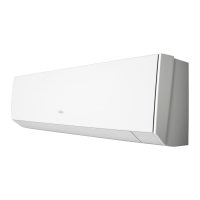
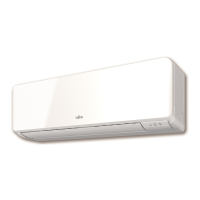



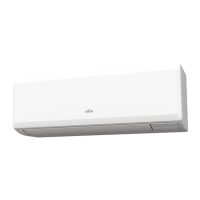
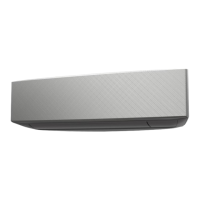



